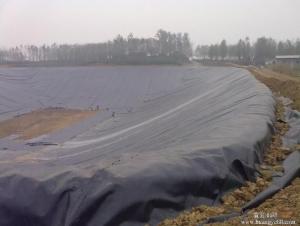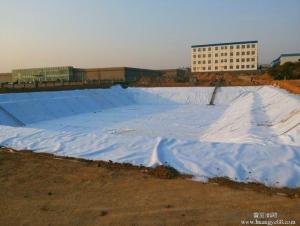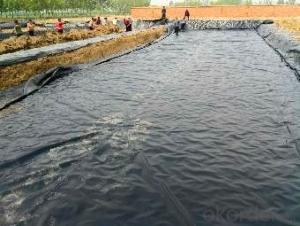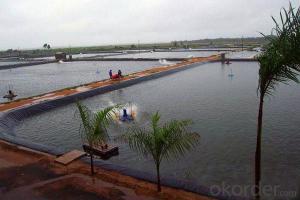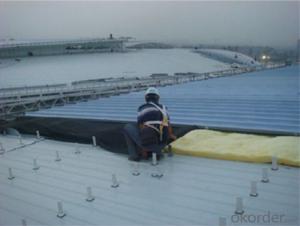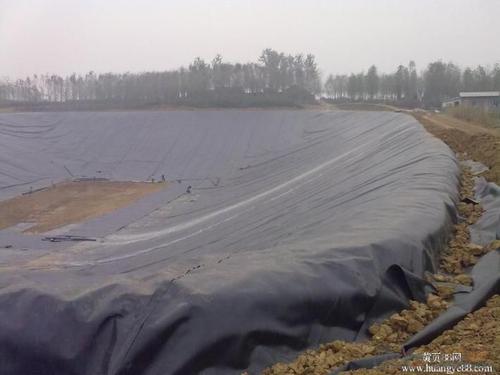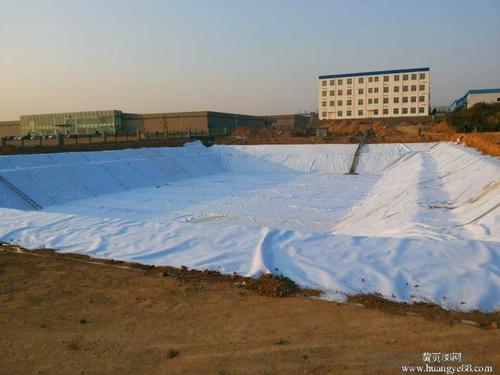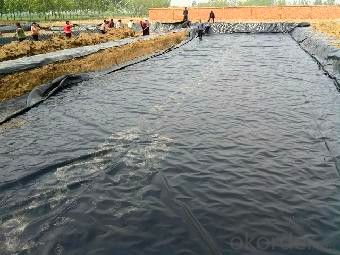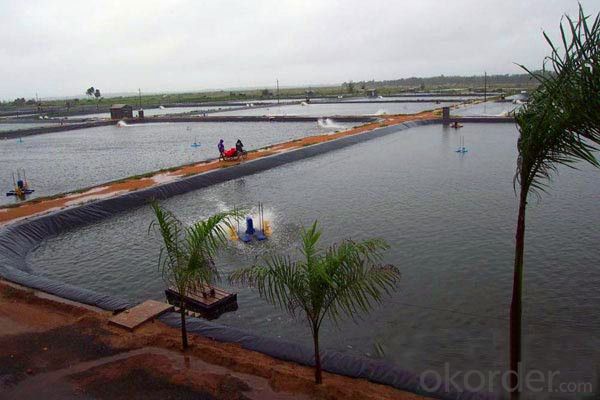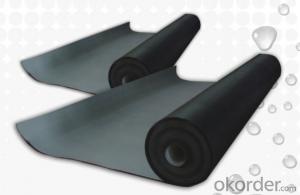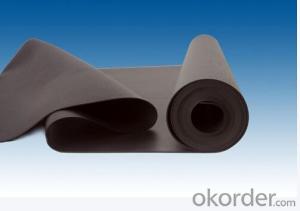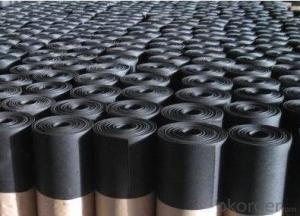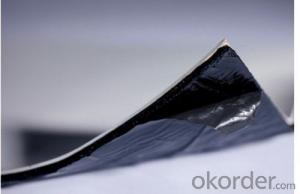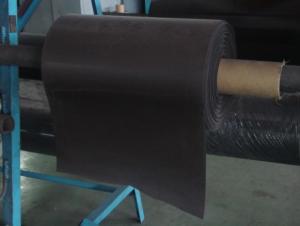EPDM Waterproof Membrane for Roofing Construction
- Loading Port:
- Qingdao
- Payment Terms:
- TT OR LC
- Min Order Qty:
- 10000 m²
- Supply Capability:
- 5000000 m²/month
OKorder Service Pledge
OKorder Financial Service
You Might Also Like
Description Of EPDM Waterproof Membrane:
1. Waterproofing layer is imperfect: It’s hard to completely avoid weak points or breakages, which makes waterproofing layer with deficiencies or hidden defects more or less.
2. The main structure is with defects: It’s hard to completely avoid construction joint, deformation joint and small fissures in structure.
3. If there are weak points or breakage, water gets in and fluid-channeling happens between the main structure and the waterproofing layer. In such cases, once the main structure is with defects, seepages would occur.
Main Features of EPDM Waterproof Membrane:
Different types or specifications of products should be separated, not mixed.
Keep it dry and ventilated, protected from the sun or rain.
Storage temperature should never be higher than 45 °C. Pile up the membranes flatwise whose stockpile height never exceeds five layers. One layer is guaranteed if it is placed vertically.
Prevent it from inclination or In the process of transportation, it should be lying in case of inclination or lateral pressure. If necessary, cover it with felt-cloth.
Storage time is at least one year from manufacture date on if the product is under normal operation of storage.
Specifications of EPDM Waterproof Membrane:
NO. | Reinforcement | PY | G | ||||||||
Type | I | II | I | II | |||||||
1 | Soluble Matters | 2mm | - | 1300g/m2 | |||||||
3mm | 2100g/m2 | ||||||||||
4mm | 2900g/m2 | ||||||||||
2 | Water tightness,30min,≥Mpa | 0.3 | 0.2 | 0.3 | |||||||
3 | Heat resistance degree,°C,no glide, no flow, no drop | 90 | 105 | 90 | 105 | ||||||
4 | Tension, N/50mm | Longitudinal | 450 | 800 | 350 | 500 | |||||
transverse | 250 | 300 | |||||||||
5 | Elongation at break,≥ | Longitudinal | 30% | 40% | - | ||||||
transverse | |||||||||||
6 | Brittleness point | -18°C | -25°C | -18°C | -25°C | ||||||
7 | Tearing strength,≥ | Longitudinal | 250N | 350N | 250N | 350N | |||||
transverse | 170N | 200N | |||||||||
8 | Manual work and climate quicken aging | Appearance | No.1 degree (no glide, no flow, no drop) | ||||||||
Longitudinal tensionkeeping rate,≥ | 80 | ||||||||||
Brittleness point | -10°C | -20°C | -10°C | -20°C | |||||||
GB18242-2000 | |||||||||||
Applications of EPDM Waterproof Membrane:
1.Roofs, Basement, Toilets
2. Industrial and civil building waterproofing
3. Geosynthetic liner for swimming pool, channels, irrigation system
4. Especially suitable for projects with high requirements in durability, anti-corrosion and deformation.
IMages of EPDM Rubber Waterproof Membrane:
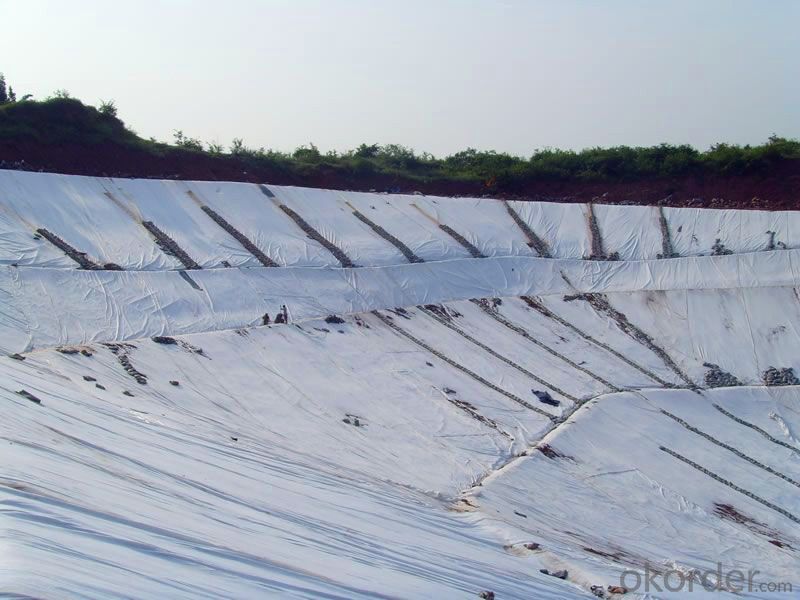
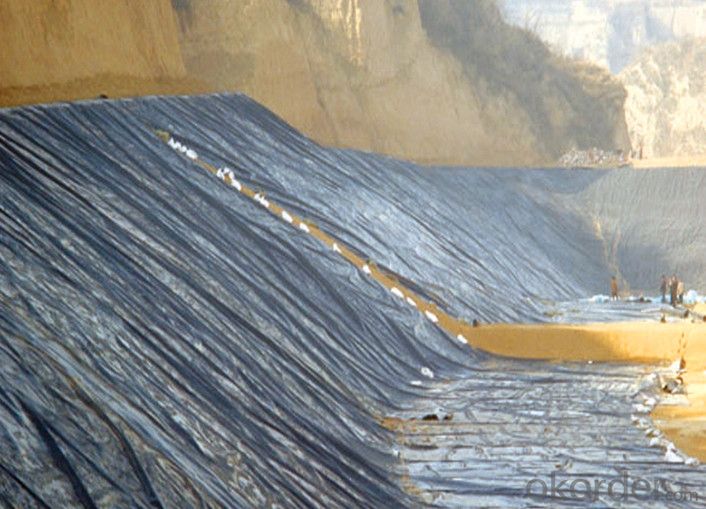
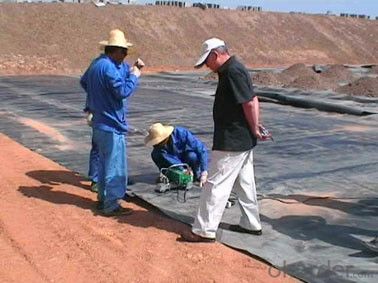
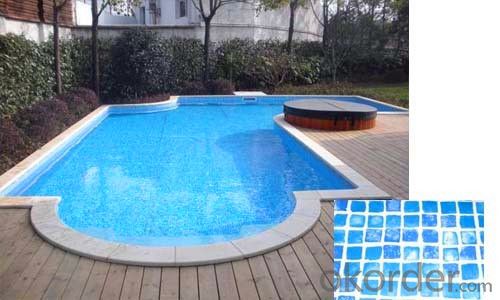
FAQ:
Q1.:What are we supplying?
A1:We are specialized in producing Colorful Asphalt Roof Shingle, SBS/APP modified bitumen waterproof membrane, Self adhesive bitumen waterproof membrane, PVC waterproofing membrane, EPDM rubber roofing membrane, Single Component Polyurethane Waterproof Coating, and Spray Polyurea Waterproof Coating
.
Q2: How Many years experience do we have?
A2:We have exported to more than 20 countries in the past 15 years.
Q3.:Do you provide samples for us?
A3:Yes,We will provide samples for free.Waiting for your your good news.
- Q: How does a waterproofing membrane handle exposure to UV rays and sunlight?
- Various mechanisms are employed in the design of a waterproofing membrane to withstand exposure to UV rays and sunlight. Firstly, UV stabilizers and additives are incorporated into most waterproofing membranes to shield the material from the harmful effects of prolonged UV radiation. These stabilizers effectively prevent the membrane from deteriorating and breaking down when exposed to sunlight. In addition, many waterproofing membranes are manufactured with reflective pigments or coatings that assist in reflecting a significant portion of the sun's rays. This reflective quality reduces the absorption of UV radiation, minimizing heat absorption by the membrane. Consequently, the membrane remains cooler, bolstering its durability and extending its lifespan. Furthermore, certain waterproofing membranes are reinforced with materials like fiberglass or polyester to provide extra strength and resistance against UV rays. These reinforcing materials act as a barrier, safeguarding the membrane from direct exposure to sunlight and diminishing the risk of sun damage. It should be noted that although waterproofing membranes are designed to withstand UV exposure, their performance can be influenced by factors such as the intensity and duration of sunlight exposure, climate conditions, and maintenance practices. Regular inspections and maintenance, including the application of UV protective coatings or sealants, can aid in prolonging the life and effectiveness of the waterproofing membrane in areas with high UV exposure. Ultimately, a well-designed and correctly installed waterproofing membrane is engineered to endure UV rays and sunlight, ensuring long-term protection and durability for the underlying structure.
- Q: Can a waterproofing membrane be used in saunas?
- Indeed, a sauna can utilize a waterproofing membrane. Given that saunas consist of environments abundant in moisture, implementing a waterproofing membrane can effectively avert water damage and shield the underlying structure against moisture infiltration. The membrane functions as a barrier, effectively impeding the permeation of water and mitigating potential complications like mold growth, mildew formation, and rot. The selection of a waterproofing membrane specifically engineered for high-moisture regions, capable of withstanding the intense heat and humidity characteristic of saunas, is of utmost importance. Additionally, proper installation and adherence to manufacturer guidelines are essential to guarantee the efficiency and durability of the waterproofing membrane within a sauna setting.
- Q: Are there any specific safety precautions to consider when installing a waterproofing membrane?
- Yes, there are several safety precautions to consider when installing a waterproofing membrane. Firstly, it is important to ensure that all necessary personal protective equipment (PPE) is used by the installation team. This may include gloves, safety glasses, and appropriate footwear to prevent any injuries or exposure to hazardous materials. Additionally, it is crucial to work in a well-ventilated area to avoid inhalation of fumes or vapors emitted during the installation process. If working in a confined space, proper measures should be taken to ensure adequate ventilation and the use of proper respiratory protection if necessary. Furthermore, it is important to follow the manufacturer's instructions and guidelines for the specific waterproofing membrane being installed. This includes understanding any potential hazards associated with the product, such as flammability or toxicity, and taking necessary precautions to prevent accidents or exposure. Another safety consideration is to ensure that the installation area is properly prepared before beginning the process. This may involve removing any debris, cleaning the surface, and addressing any potential hazards or obstacles that could pose a risk to the installation team. Lastly, it is important to have a designated safety plan in place, including emergency procedures and first aid kits readily available in case of accidents or injuries. Regular safety inspections and monitoring throughout the installation process are also recommended to identify and address any potential safety risks promptly. By following these safety precautions, the installation of a waterproofing membrane can be carried out safely and effectively, minimizing the risk of accidents or injuries.
- Q: Can a waterproofing membrane be used for power plants?
- Yes, a waterproofing membrane can be used for power plants. Waterproofing membranes are commonly used in various applications where water penetration needs to be prevented, and power plants are no exception. Power plants often have areas that are exposed to water, such as cooling towers, wet flue gas desulfurization systems, and other water management systems. Using a waterproofing membrane in these areas can help protect the structures and equipment from water damage, corrosion, and leaks. Additionally, waterproofing membranes can also be used in underground structures, such as basements or tunnels, which are commonly found in power plants. These membranes provide an effective barrier against water infiltration, ensuring the integrity and longevity of the structures in power plants. Therefore, utilizing a waterproofing membrane is a practical and beneficial solution for maintaining the performance and reliability of power plant facilities.
- Q: Can a waterproofing membrane be used for disaster relief structures?
- Yes, a waterproofing membrane can be used for disaster relief structures. Waterproofing membranes are designed to prevent water penetration and can be an effective solution for protecting temporary structures in disaster-affected areas. Whether it is a temporary shelter, medical facility, or storage unit, a waterproofing membrane can provide a barrier against rain, floods, and other water-related challenges. By ensuring that the structure remains dry, it helps maintain the integrity of the relief structure and protects the occupants or stored supplies from water damage. Additionally, waterproofing membranes are often lightweight, easy to install, and can be quickly deployed in emergency situations, making them ideal for disaster relief efforts.
- Q: Is a waterproofing membrane resistant to saltwater or salt damage?
- Typically, a waterproofing membrane resists saltwater or salt damage. Its purpose is to create a barrier against water and moisture, making it suitable for use in marine environments or coastal areas. These membranes are made from materials that can withstand the corrosive effects of saltwater or salt. To ensure their resistance to saltwater or salt damage, proper preparation and sealing techniques are employed during installation. However, it is important to note that the level of resistance may vary depending on the type and quality of the membrane. Therefore, it is advisable to consult with a professional or the manufacturer to choose the appropriate membrane for the specific application and environment.
- Q: Can waterproofing membranes be used on concrete pipes?
- Yes, waterproofing membranes can be used on concrete pipes. Waterproofing membranes are commonly used to prevent water penetration and protect concrete structures from moisture damage. Concrete pipes, like any other concrete structure, are susceptible to water infiltration, which can lead to deterioration and reduced lifespan. Applying a waterproofing membrane to concrete pipes can help to create a barrier against water and prevent potential issues such as leaks, cracks, and corrosion. The membrane is typically applied to the exterior of the pipe, forming a protective layer that prevents water from seeping into the concrete. This can help to extend the lifespan of the pipes and ensure their long-term durability.
- Q: Can a waterproofing membrane be used on roofs with solar panels?
- Yes, a waterproofing membrane can be used on roofs with solar panels. In fact, it is highly recommended to use a waterproofing membrane in such cases to ensure that the roof remains watertight and protected from any potential leaks. The waterproofing membrane acts as a barrier that prevents water from seeping into the roof structure and causing damage. It is important to choose a waterproofing membrane that is compatible with the solar panels and does not interfere with their performance. Additionally, proper installation techniques should be followed to ensure a seamless integration of the membrane and solar panels.
- Q: Can a waterproofing membrane be used on precast concrete block surfaces?
- Yes, a waterproofing membrane can be used on precast concrete block surfaces. Waterproofing membranes are commonly used to protect below-grade structures, such as basements and foundations, from water intrusion. Precast concrete blocks are commonly used in the construction of these structures, and applying a waterproofing membrane can help prevent water from penetrating through the concrete and causing damage. The membrane acts as a barrier, preventing the passage of water while still allowing the concrete to breathe and release any moisture buildup. Additionally, waterproofing membranes can also help improve the overall durability and longevity of the precast concrete blocks by protecting them from moisture-related issues such as cracking, spalling, and corrosion. It is important to choose a waterproofing membrane that is specifically designed for below-grade applications and is compatible with concrete surfaces to ensure proper adhesion and long-term effectiveness.
- Q: Can a waterproofing membrane be used on asphalt surfaces?
- Yes, a waterproofing membrane can be used on asphalt surfaces. Waterproofing membranes are often used to protect various surfaces, including asphalt, from water damage. They create a barrier that prevents water from seeping into the asphalt, reducing the risk of cracks, deterioration, and other forms of damage caused by moisture.
Send your message to us
EPDM Waterproof Membrane for Roofing Construction
- Loading Port:
- Qingdao
- Payment Terms:
- TT OR LC
- Min Order Qty:
- 10000 m²
- Supply Capability:
- 5000000 m²/month
OKorder Service Pledge
OKorder Financial Service
Similar products
Hot products
Hot Searches
Related keywords
